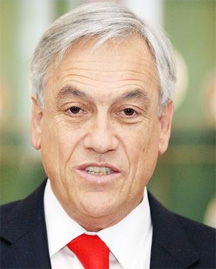When I interviewed Chilean President Sebastian Piñera last week after the signing of an agreement to create the four-country ‘Pacific Alliance‘ trade bloc and he said it’s Latin America’s most ambitious economic integration project, my first reaction was of respectful scepticism.
 After all, Latin American countries have signed dozens of super ambitious economic and political integration blocs in recent years — including those known by their acronyms as ALADI, SICA, MERCOSUR, UNASUR, and CELAC — that were inaugurated with great fanfare, only to be quickly forgotten.
After all, Latin American countries have signed dozens of super ambitious economic and political integration blocs in recent years — including those known by their acronyms as ALADI, SICA, MERCOSUR, UNASUR, and CELAC — that were inaugurated with great fanfare, only to be quickly forgotten.
But Piñera told me there are solid grounds to believe that the new bloc will be different, among other things, because it starts out with a big advantage: its members already have free trade agreements between themselves, and can thus move on to more ambitious goals, such as creating a united front to negotiate free trade deals with Asia, the world’s most dynamic economic area.
“This is an alliance that will go far beyond free trade, because it seeks an integration that allows the free flow of goods, services, investments and people,” Piñera said. “And additionally, it seeks physical integration through joint infrastructure and energy projects.”

The combined economies of Pacific Alliance members already amount to the world’s 9th largest economy, and their total exports represent 55 per cent of Latin America’s overall exports, he said. The Pacific Alliance’s current exports are already nearly twice those of South America’s MERCOSUR common market, made up of Brazil, Argentina, Uruguay and Paraguay.
Top officials of Pacific Alliance member countries tell me that one of the new group’s main objectives will be signing a free trade deal with the 10-nation Association of Southeast Asian Nations (ASEAN), which includes Indonesia, Thailand, Vietnam and Singapore.
At the June 6 signing ceremony in Antofagasta, Chile, the presidents of Mexico, Colombia, Peru and Chile — with Panama and Costa Rica attending as observer countries that hope to join the group soon — agreed that the new bloc will finalize creation of the first combined Latin American stock exchange, which is already in motion but does not yet include Mexico.
They also agreed to set up joint export promotion offices in Asian countries, eliminate visa restrictions for their citizens, and create a joint university system where — much like in Europe — students will be able to get credits for their studies in any of the bloc’s member countries.
On the trade side, they agreed that the Pacific Alliance will seek to eliminate all import duties and country-of-origin rules between member countries by the end of 2012. The four leaders also agreed to start negotiations to create a supranational joint dispute resolution system, which — like in Europe — would give extra security to companies investing in any member country.
Most international trade experts I talked to are generally upbeat about the Alliance of the Pacific.
“This looks like something more serious than other Latin American integration efforts,” said Antoni Estevadeordal, head of the Inter-American Development Bank’s integration and trade division. “If there’s continued political will to push this forward, we may see a something new and very promising in the region.”

Osvaldo Rosales, head of the trade and integration division of the United Nations Economic Commission for Latin America and the Caribbean, told me that “it’s an interesting initiative, with a lot of potential, although it could have been even more ambitious.”
Rosales explained that while it seeks the free circulation of goods, services, investments and people, it only contains a fixed deadline for the free movement of goods by the end of this year. There is no such fixed deadline for the remaining three subgroups, he added.
My opinion: The new Pacific Alliance makes sense for a reason that is much simpler than most of the agreement’s clauses, which is that no Latin American country on its own — even the biggest ones, like Mexico — has the export capacity to supply manufactured goods to Asia’s giant markets. If Latin American countries want to sell cars, refrigerators or shoes to Asia, they will have to create joint production chains, and negotiate joint trade deals.
The four members of the new bloc, plus Panama and Costa Rica if they join them, have a fabulous opportunity in front of them. I remain a respectful sceptic about the Pacific Alliance, but much less so than about all other existing Latin American trade blocs.
© The Miami Herald, 2012. Distributed by Knight Ridder/Tribune Media Services.
